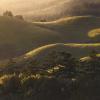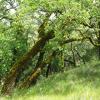Landscapes
| Landscapes | Condition & Trend | Confidence | |
|---|---|---|---|
 |
Coast Redwood Communities |
High | |
 |
Grassland Communities |
Low | |
 |
Open-canopy Oak Woodland Communities |
Moderate | |
 |
Shrubland Communities |
High |
Individual species (e.g., osprey, coho salmon), taxonomic groups (e.g., birds, mammals), or vegetation communities (e.g., open-canopy oak woodlands, serpentine barrens) can be used to take some measure of the health of Mt. Tam. However, these indicators only represent a small portion of the overall ecological community and natural processes of which they are part.
Combining, or “rolling up,” these health indicators in various ways allows for a more complete understanding of how well ecological systems and landscape-level processes are functioning within the entire One Tam area of focus.
Rolling up indicators for this purpose is not an exact science; rather, it provides another tool for land managers and scientists to track the mountain’s health. However, this approach also runs the risk of obscuring important details as a result of combining different indicators together.
For example, rolling up some individual species and community-level indicators to predict the health of an ecosystem may result in that ecosystem being described as doing well overall, while some species within that system are actually doing poorly. Given the range of possible contributing factors, it can also be challenging to decide what to include (or not include) in the roll-up.
A number of ways that indicators could be combined to communicate broader ecosystem health were considered for this project. The ones we had enough information to analyze are summarized in the links at the top of this page. Those that were not included were left out because the necessary data are not already available or easy to obtain, and/or the analysis can not be done with current staff and funding. These will be prioritized and undertaken as resources are secured.
| Landscapes | Condition & Trend | Confidence | |
|---|---|---|---|
 |
Coast Redwood Communities |
High | |
 |
Grassland Communities |
Low | |
 |
Open-canopy Oak Woodland Communities |
Moderate | |
 |
Shrubland Communities |
High |